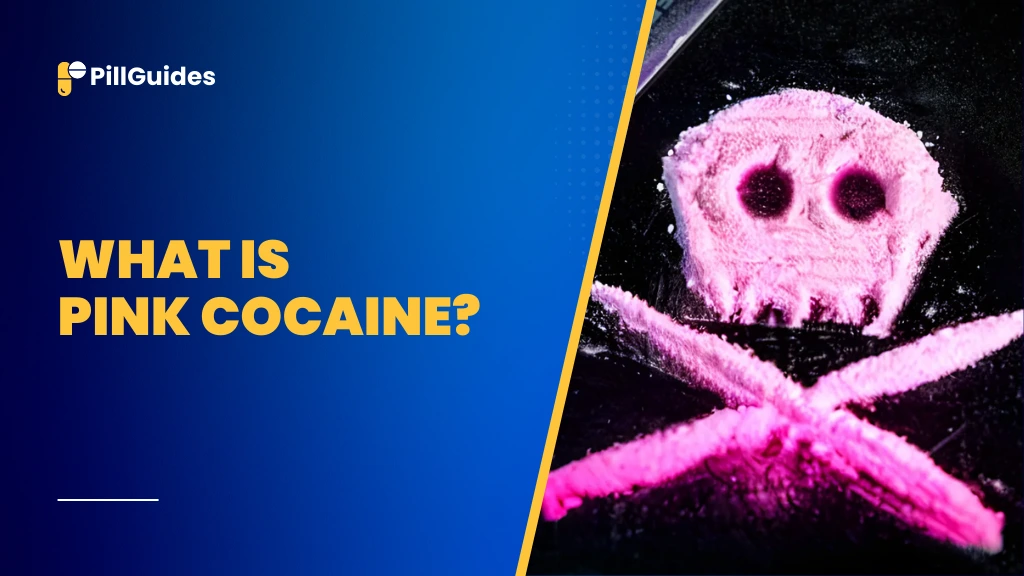The term “pink cocaine” has been circulating widely, particularly in conversations about new synthetic drugs. But what is pink cocaine, and why has it become a topic of concern? Pink cocaine is a synthetic designer drug, not related to actual cocaine. This one is known for its reputation for a striking pink colour with potent effects; euphoric and hallucinogenic.
In this blog, explore pink cocaine’s origin, composition, effect, dangers and legality, as well as why it’s such a rising issue in the drug world.
What Is Pink Cocaine?
Although pink cocaine is not cocaine, it sounds like it is. Often referred to as a 2C-B analogue or an amphetamine, MDMA (ecstasy) and other substances mixture, it is a synthetic drug. Added dyes make it a bright pink colour, which is visually different from other synthetic drugs.
Street Names: The pronunciation of 2C-B typically used to refer to pink cocaine is ‘Tuci’ or ‘Tucibi’. Among the club and party scenes it has become popular for its euphoric and psychedelic effects.
The Composition of Pink Cocaine
Intake of pink cocaine is an unregulated synthetic drug, making the composition vary from time to time. The primary ingredient is usually 2C-B, but it may also include:
- MDMA (Ecstasy): A drug notorious for its euphoric effects, it is a party drug.
- Ketamine: Sometimes mixed in was a dissociative anaesthetic used for hallucinogenic effects.
- Amphetamines: Stimulants that make you more alert and give you more energy.
Pink cocaine is unregulated which means there is no guarantee if one batch is better than another, or what is and isn’t in it, and this can be dangerous.
Effects of Pink Cocaine
Composition and dosage of pink cocaine may have variable effects. Common effects include:
- Euphoria: Users may report happiness and feeling of well-being.
- Increased Energy: Caffeine is stimulant, and makes users feel more active and alert.
- Hallucinations: Higher doses are more common, particularly because visual and auditory hallucinations are common.
- Heightened Sensory Perception: Improved touch, sound and visual sensations.
- Increased Sociability: Many users report they feel more confident and talkative.
Sounds appealing There are serious risks.
Dangers and Risks of Pink Cocaine
Pink cocaine is a Far from safe, and far from to be underestimated.
- Unpredictable Composition: The drug is not regulated and users never know what they’re taking. It increases the danger for overdose or serious reactions.
- Physical Side Effects: It may also cause users to feel nausea, heart palpitations and headaches as well as dehydration.
- Mental Health Risks: Anxiety, paranoia, or even psychosis are triggers of the hallucinogenic effects.
- Addiction Potential: Recreational use of the drug is not as addictive as is traditional cocaine, but repeated use does result in dependence.
- Overdose Risks: Life threatening conditions such as heart failure and seizures can also be caused by taking high doses.
How Pink Cocaine Affects Mental and Physical Health
While pink cocaine might seem safe, it affects both your physical and mental health in unpleasant ways, sometimes with very serious consequences in the long run.
Mental Health Effects
- Anxiety and Paranoia: Pink cocaine is hallucinogenic, and may make you feel anxious, especially if you are in a stressful environment.
- Risk of Psychosis: Any amount of dalint can lead to psychosis once you take enough dalint, including delusions and disconnection from reality.
- Addiction and Dependence: Of course, pink cocaine is not as physically addictive as cocaine but it can nevertheless result in psychological addiction, with cravings and compulsive behaviour.
Physical Health Effects
- Cardiovascular Strain: The heart rates and blood pressures become increased and puts great stress on the heart which can lead to cardiac issues.
- Dehydration and Exhaustion: Notorious for its ability to dehydrate and cause severe electrolyte imbalances prolonged use, particularly during parties, is bad news.
- Neurological Damage: Pink cocaine then is a vehicle for synthetic chemicals that may injure long term brain cells, resulting in memory and cognition problems.
Anyone considering using or encountering pink cocaine must understand these impacts. Firstly, you need to realize that whilst the immediate effects will seem attractive it is incredibly dangerous to your long term health and is too often irreversible.
Who Uses Pink Cocaine and Why?
Younger individuals especially nightclub and music festival party types have been known to use pink cocaine. For all of its colourful appearance and the ‘fun’ drug reputation surrounding it, this drug’s appeal. One of the ways people began to glamorize pink cocaine was through social media.
Is Pink Cocaine Legal?
Pink cocaine is legal in every country. For its close association with 2C-B or other catatonia, it is categorised as a controlled substance in most places. This means:
- Possession: Sometimes it results in criminal charges.
- Distribution: It can result in serious penalties such as imprisonment.
- Manufacturing: Not legal, punishable by law.
Synthetic drugs like pink cocaine can be highly dangerous, and it’s important to know the local laws and if you get caught with synthetic drugs you could face serious consequences.
How to Stay Safe and Informed
- Avoid Unregulated Drugs: Do not use substances of unknown composition.
- Educate Yourself: Keep your ear to the ground for new synthetic drugs and what they can do to you.
- Seek Help: If you or a loved one needs substance abuse support, speak to a professional network.
- Spread Awareness: Share reliable things about pink cocaine so that people help others know how dangerous it is.
Conclusion
Pink cocaine or ‘Tuci’ or ‘Tucibi’ is a synthetic designer drug, which caught popularity in recent years. Although its euphoric and hallucinogenic properties can be appealing to users, the dangers of an unregulated composition mixed with unpredictable side effects are many times worse than whatever minor perceived benefits are currently providing.
Staying informed about the risks of drug use with synthetic drugs is important to know, and also educating yourself to the severe health and legal implications of their use. He or she should seek help if you or someone you know is using pink cocaine, from healthcare professionals or support networks.
Disclaimer
This article is for informational purposes only and does not promote or condone drug use. Always seek professional advice for concerns about drug use or addiction.
Read More: How Much Does a Half Ounce of Cocaine Weight? Exploring the Facts
FAQs About Pink Cocaine
1. What is pink cocaine made of?
Pink cocaine is usually a mixture of synthetic chemicals, usually 2C-B, combined with other substances including MDMA, ketamine, and amphetamines. The batch depends; the composition varies.
2. How different is pink cocaine from normal cocaine?
Pink cocaine is not regular cocaine. Synthetic drug, hallucinogen and stimulant but regular cocaine is a stimulant made from the coca leaf.
3. Why is pink cocaine popular?
Although pink cocaine is relatively inexpensive, it is consumed more by party people and club goers because of its happy feeling and improved sensory awareness. But it’s not safe because of its popularity.
4. Is pink cocaine addictive?
It does not sound as addictive as regular cocaine but the use of pink cocaine can be psychologically dependent, especially on repeated use.










